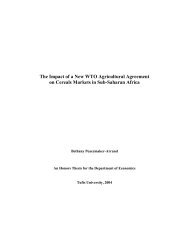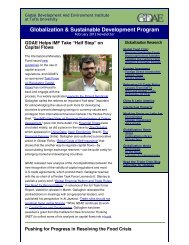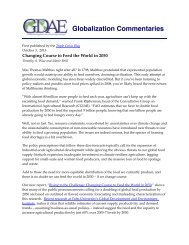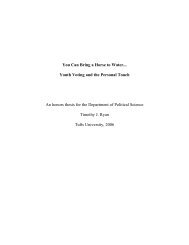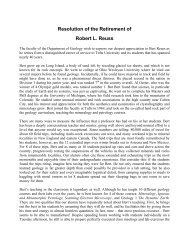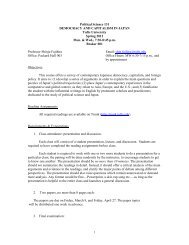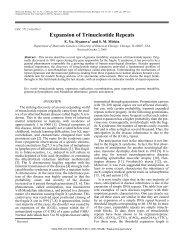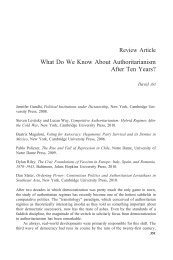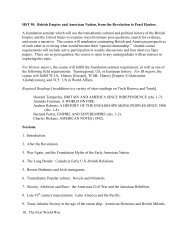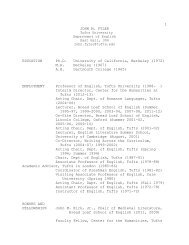MARKETS WITH MARKET POWER - Tufts University
MARKETS WITH MARKET POWER - Tufts University
MARKETS WITH MARKET POWER - Tufts University
You also want an ePaper? Increase the reach of your titles
YUMPU automatically turns print PDFs into web optimized ePapers that Google loves.
most likely engage in non-price competition to differentiate themselves from other<br />
publishers. They may advertise to specific markets, sponsor books signings, and use other<br />
tactics to promote their books.<br />
5.2. This question is designed to tap into the real-world knowledge that some students might<br />
have about market structure. It may be best run as a full-class exercise, taking the<br />
experience of one or a few students, and having a full-class discussion of each case.<br />
Students should be encouraged not just to tell stories, but rather use the stories to unravel<br />
and illustrate (and even critique) the “conditions” for the various market structures<br />
described in the text. For less experienced classes, you might substitute a general call for<br />
examples, with an example of your own of a well-known consumer-good manufacturer that<br />
has been in the news.<br />
Answers to End-of-Chapter Review Questions<br />
1. The three idealized market structures with market power are: pure monopoly (only one<br />
seller), monopolistic competition (many sellers, but they sell slightly different things),<br />
and oligopoly (so few sellers that they each need to watch what the others are doing).<br />
2. Pure monopoly is characterized by: only one seller, the good being sold has no close<br />
substitutes, and barriers of entry exist.<br />
3. Three types of barriers to entry are: economic barriers (high fixed costs, network<br />
externalities, economies of scale), legal barriers (copyrights, franchises, patents,<br />
trademarks), and deliberate barriers (exclusionary practices, predatory pricing, dumping).<br />
4. A pure monopolist is imagined to maximize profits by producing where marginal revenue<br />
equals marginal cost but charging as high a price as it can on the market demand curve.<br />
5. Monopolists are inefficient because: deadweight loss is created (the price level exceeds<br />
marginal cost), innovations may be reduced, costs may be spent to maintain barriers to<br />
entry, and rent-seeking behavior.<br />
6. Monopoly market power generally leads to inefficiencies in the form of deadweight loss.<br />
The monopolist produces at an output level at which price exceeds marginal cost and<br />
society could gain from increased output of the product. See Figure 12.2.<br />
7. Four cases in which a monopoly might be efficient are: natural monopolies (economies of<br />
scale dictate that one firm can produce at the minimum per-unit cost), intellectual<br />
property (the potential benefits of patents, trademarks, etc. actually encourage<br />
innovations), pressure to appear competitive (firms worry that too-high monopoly profits<br />
will attract too much attention so they operate more like a competitive firm), and perfect<br />
price discrimination (the monopolist is able to charge every buyer his or her maximum<br />
willingness to pay).<br />
Chapter 12 − Markets with Power 7





